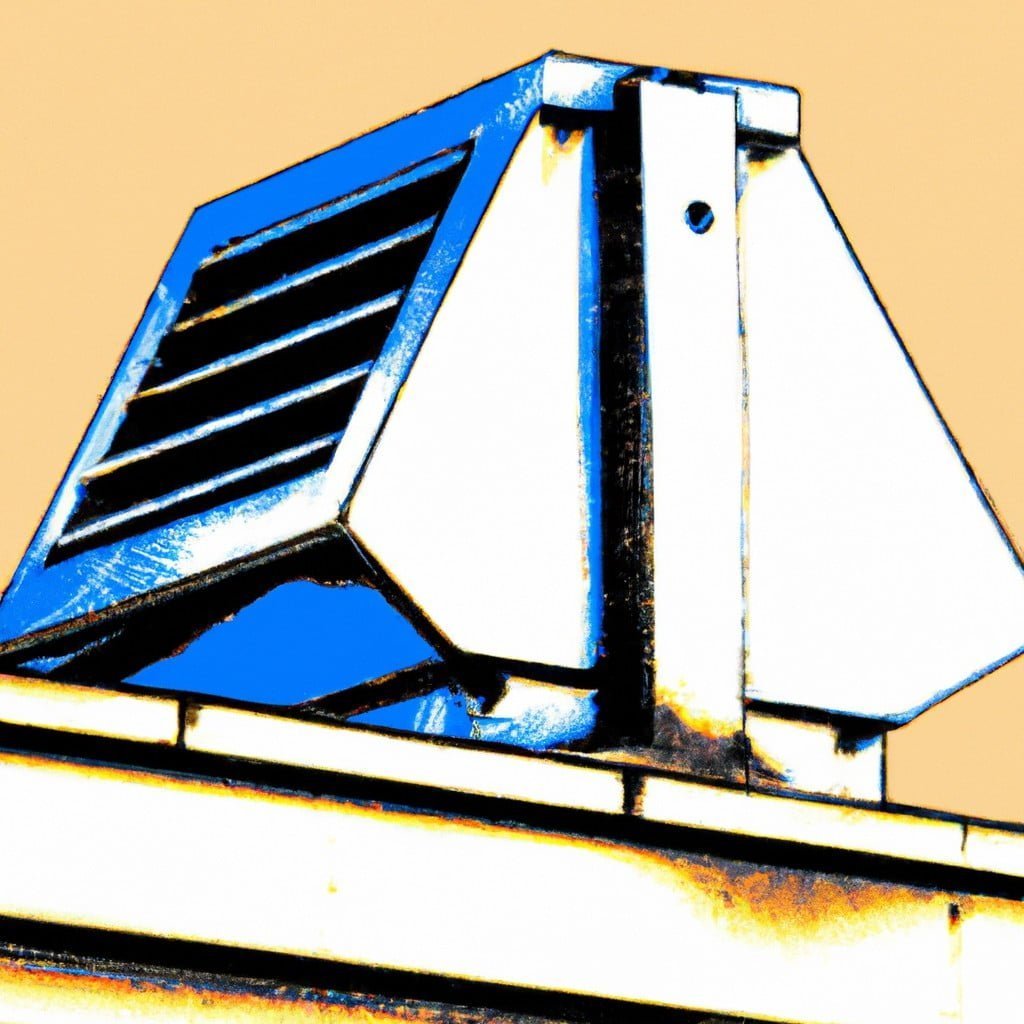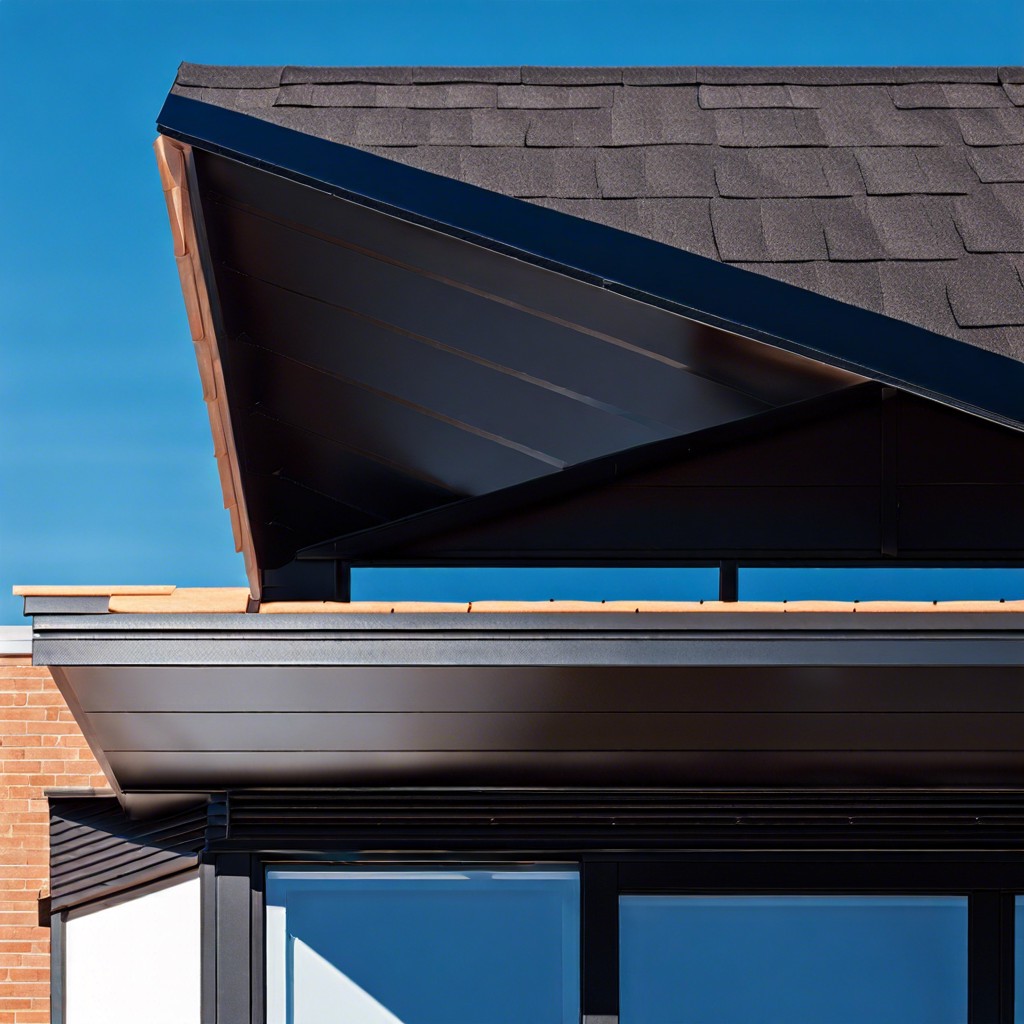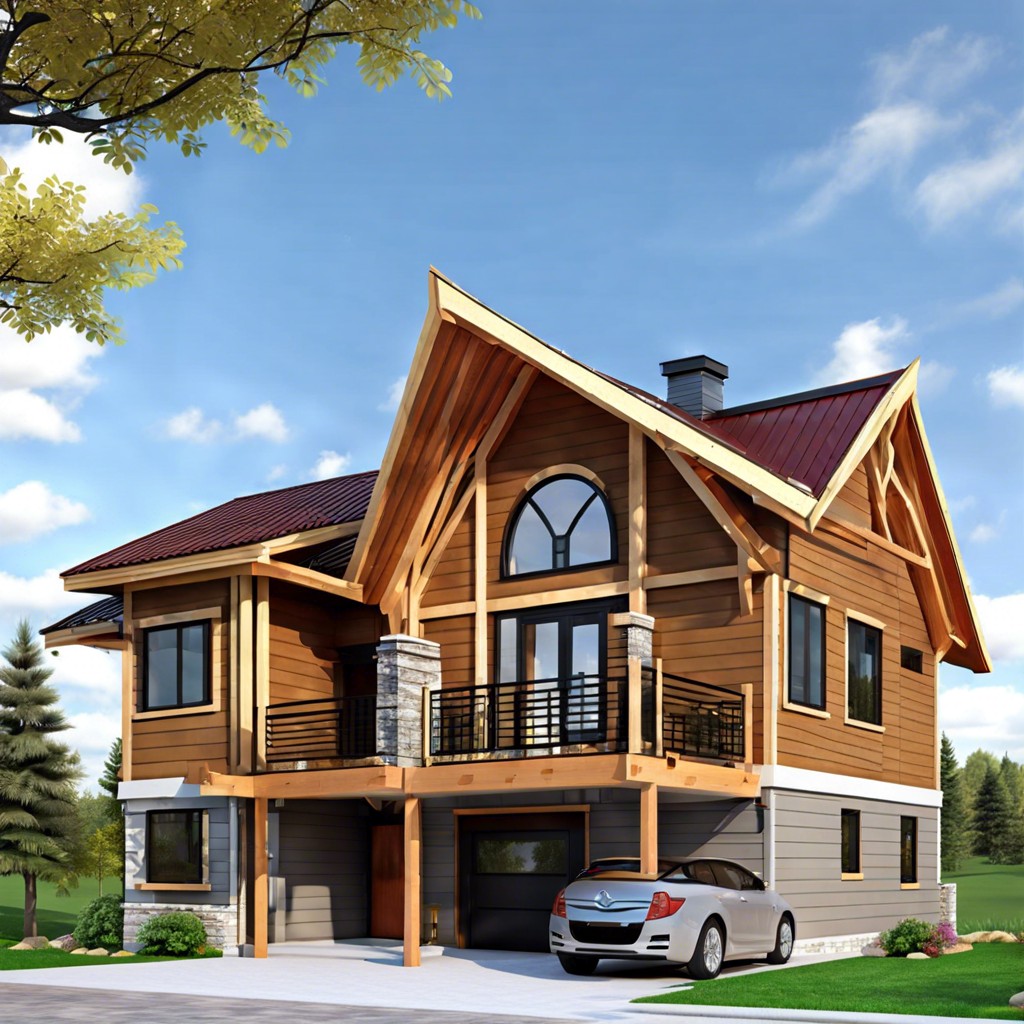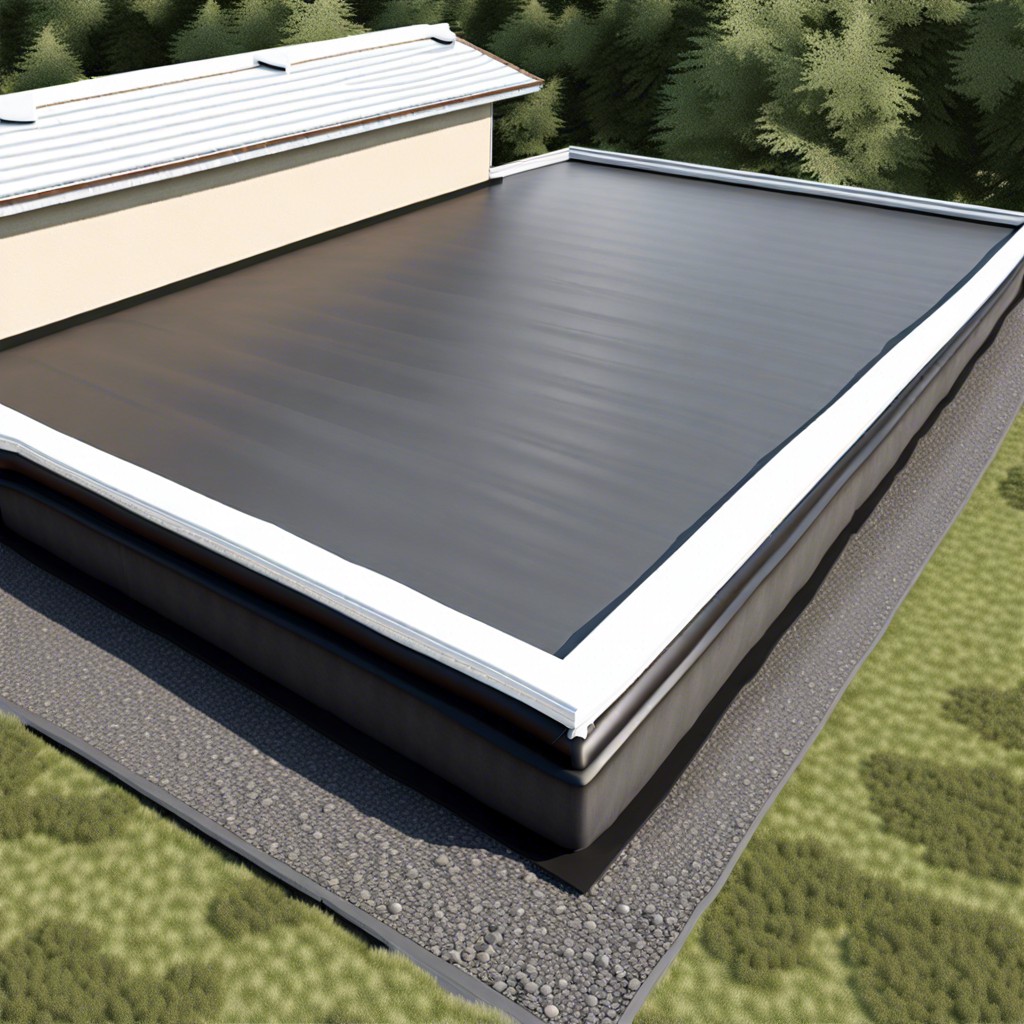Last updated on
Discover the various types of roof dryer vents and learn how to choose the perfect one for your home, ensuring proper ventilation and safety.
Roof dryer vents are an essential part of any home or building. They help to remove moisture and heat from your laundry room, preventing mold growth and reducing the risk of fire hazards.
However, not all roof dryer vents are created equal. There are several types to choose from, each with its own set of advantages and disadvantages.
In this article, we’ll take a closer look at the different types of roof dryer vents available on the market today so that you can make an informed decision when it comes time to purchase one for your home or business. So whether you’re a homeowner looking for a new roof dryer vent or a contractor seeking information on the latest products, this article is for you!
Overview of Roof Dryer Vents

Roof dryer vents are an essential component of any home or building. They provide a safe and efficient way to remove moisture, heat, and lint from your laundry room.
Without proper ventilation, the hot air produced by your dryer can cause mold growth in walls and ceilings or even lead to a fire hazard.
There are several types of roof dryer vents available on the market today. Some models use natural wind power for ventilation while others rely on electricity or solar energy.
The design you choose will depend on various factors such as climate conditions in your area, roof type, budget constraints among other things.
Louvered Roof Vent
This type of vent features a series of slats or louvers that allow air to flow in and out while keeping debris, animals, and insects from entering your home. Louvered vents are available in various sizes and materials such as aluminum, copper or stainless steel.
When choosing a louvered roof vent for your home’s dryer system, it’s essential to consider factors like size compatibility with ductwork diameter and ease-of-installation. You’ll also want to ensure that you choose one made from durable material so that it can withstand harsh weather conditions without rusting or corroding over time.
Goose Neck Roof Vent
This type of vent features a curved shape that resembles the neck of a goose, hence the name. The curve helps to prevent rainwater from entering your home while still allowing hot air and moisture to escape.
Goose neck roof vents are typically made from durable materials such as aluminum or galvanized steel, making them resistant to rust and corrosion. They come in various sizes, so it’s important to choose one that fits your specific needs based on the size of your dryer duct.
One advantage of using this type of roof vent is its affordability compared with other types on the market today. It’s also easy to install if you have some basic DIY skills or can hire someone who does.
However, like any other product out there, goose neck vents have their downsides too. For instance, they may not be suitable for areas with high winds since they can easily get damaged by strong gusts over time.
Roof Ventilation Cap
It works by allowing hot air and moisture to escape from the attic or crawl space, preventing mold growth and reducing energy costs. Roof ventilation caps come in various shapes and sizes, but they all serve the same purpose: to provide proper ventilation for your home.
One advantage of using a roof ventilation cap is that it can be installed easily without any special tools or equipment. They are also relatively inexpensive compared to other types of vents, making them an affordable option for homeowners on a budget.
However, it’s important to note that not all roofs are suitable for this type of vent. If you have a flat or low-pitched roof, then you may need another type of vent such as louvered vents or box-shaped vents.
When choosing a roofing contractor for installation services make sure they have experience with installing different types so they can recommend which one will work best based on your specific needs.
HVAC Ventilation On the Roof
This type of vent is designed to work with your home’s heating, ventilation, and air conditioning (HVAC) system. It helps to regulate the temperature and humidity levels in your home by circulating fresh air throughout the space.
An HVAC roof dryer vent typically consists of a series of ducts that run from your laundry room up through the attic and out onto the roof. The ducts are connected to a fan or blower that pulls hot, moist air out of your laundry room and pushes it outside.
One advantage of using an HVAC ventilation system for drying clothes is that it can help reduce energy costs by improving overall airflow in your home. Because these systems are integrated into existing heating/cooling systems they tend to be more efficient than standalone vents.
Mushroom-shaped Roof Vent
This type of vent features a unique design that resembles the cap of a mushroom, with an umbrella-like top and vertical fins around the base. The shape allows for efficient ventilation while also providing protection against rain, snow, and debris.
Mushroom-shaped vents are typically made from durable materials such as aluminum or galvanized steel to withstand harsh weather conditions. They come in various sizes to fit different roof types and can be installed on both flat roofs or sloped roofs.
One advantage of using this type of vent is its ability to provide natural ventilation without requiring any electricity or mechanical components. As hot air rises through the ductwork from your dryer, it escapes through the top opening while fresh air enters through the bottom fins.
However, one potential drawback is that these vents may not be suitable for areas with high wind speeds since they rely on natural airflow rather than mechanical power like some other designs do.
Pop-up Roof Vent
This type of vent features a unique design that allows it to open and close automatically, depending on the air pressure inside your home or building.
When you turn on your dryer, for example, the increased airflow will cause the pop-up roof vent to open up and allow hot air and moisture to escape. Once you turn off your dryer and airflow decreases, this type of roof dryer vent will automatically close again.
Pop-up vents are typically made from durable materials such as aluminum or stainless steel so they can withstand harsh weather conditions without rusting or corroding over time. They also come in various sizes so you can choose one that fits perfectly with your roofing system.
Wind-driven Roof Vent
These vents are designed to harness the power of the wind and use it to ventilate your home, reducing moisture buildup and preventing mold growth. They work by using a turbine that spins as air flows through it, creating suction that draws hot air out of your attic or laundry room.
One advantage of this type of roof vent is that they do not require any electricity or wiring, making them an eco-friendly option for those looking to reduce their carbon footprint. Since they rely solely on natural airflow, there are no moving parts or motors that can break down over time.
However, one downside is that these vents may not be suitable in areas with low-wind conditions where ventilation may be inadequate during certain times throughout the year. It’s important also note proper installation techniques when installing these types of vents so as not compromise its effectiveness during high winds which could lead damage if improperly installed.
Solar-powered Roof Vent
These vents use solar panels to power a fan that draws hot air out of your attic or laundry room, reducing moisture buildup and preventing mold growth. Solar-powered vents are also energy-efficient since they don’t require any electricity from the grid.
One of the main advantages of using a solar-powered roof vent is that it can help lower your energy bills by reducing the need for air conditioning during hot summer months. These types of vents are easy to install and maintain since they don’t require any wiring or electrical work.
However, it’s important to note that not all roofs are suitable for installing solar panels due to factors such as shading or orientation towards sunlight. It’s best to consult with a professional roofing contractor before deciding on whether this type of ventilation system is right for you.
Roof Ridge Vent
This type of vent runs along the peak or ridge line of your roof and allows hot air to escape from your attic space. Roof ridge vents are typically made from metal, plastic, or shingles that match your roofing material for a seamless look.
Installing a roof ridge vent can be an effective way to improve ventilation in your home while also reducing energy costs. By allowing hot air to escape through the top of your home, you can prevent heat buildup in summer months and reduce moisture buildup during winter months.
However, it’s important to note that not all homes are suitable for a roof ridge vent installation. Your roofing contractor will need to assess factors such as attic size and shape before recommending this type of ventilation system.
Box-shaped Roof Vent
These vents are designed to fit seamlessly into the roofline, providing an unobtrusive yet effective solution for ventilation needs. Box-shaped roof vents come in a variety of sizes and materials, making it easy to find one that fits your specific requirements.
One advantage of box-shaped roof vents is their ability to provide excellent airflow while keeping out unwanted debris such as leaves or small animals. They also offer superior insulation properties compared to other types of vent designs, helping you save on energy costs by reducing heat loss during colder months.
When choosing a box-shaped roof vent, consider factors such as the size and pitch of your roofing system, as well as any local building codes or regulations that may apply. It’s important to ensure proper installation by following manufacturer instructions carefully or hiring professional help if needed.
Box-shaped roof vents can be an excellent addition to any home’s ventilation system due their efficiency and aesthetic appeal.
Flat Roof Ventilation
Without adequate ventilation, moisture can build up and cause damage to your roof’s structure. Flat roofs are particularly susceptible to this problem because they don’t have the same natural airflow as sloped roofs do.
One solution is installing a flat roof vent that allows air circulation and prevents moisture buildup.
There are several types of flat roof vents available on the market today, including box-shaped vents and mushroom-shaped vents. Box-shaped vents sit flush with the surface of your roofing material while mushroom-shaped ones protrude slightly above it.
Soffit Vent for Dryers
This type of vent is installed in the eaves or overhangs of your roof, allowing air to flow through and out from under your home’s roofing system. Soffit vents are a popular choice because they provide excellent ventilation while also being discreetly hidden from view.
When it comes to dryers, soffit vents can be an effective solution for homes where traditional rooftop dryer vents are not feasible due to space constraints or other factors. By installing a soffit vent specifically designed for dryers, you can ensure that hot air and moisture are properly expelled outside without compromising on aesthetics.
However, it’s important to note that proper installation and maintenance of any type of roof dryer vent is crucial in preventing fire hazards and ensuring optimal performance.
Ducts and Hoses for Ventilation
These ventilation systems come in a variety of materials, including aluminum, plastic, and flexible foil. The type of material you choose will depend on the specific needs of your home or business.
Aluminum ducts are durable and long-lasting but can be difficult to install due to their rigid nature. Plastic ducts are lightweight and easy to work with but may not hold up as well over time.
Flexible foil is an excellent option for those who need flexibility when installing their vent system.
It’s important always to use the correct size hose or duct for your dryer vent system as using one that is too small can cause blockages leading potentially dangerous situations such as fires.
Regular maintenance checks should also include inspecting all hoses/ductwork connections regularly checking them for any signs of wear or damage which could lead again lead into potential safety hazards if left unchecked.
Maintaining Your Roof Dryer Vent
Over time, lint and debris can accumulate in the vent, causing blockages that prevent proper airflow. This can lead to overheating of the dryer or even a fire hazard.
To maintain your roof dryer vent, you should clean it regularly by removing any visible lint or debris from both ends of the duct using a brush or vacuum cleaner attachment. You may also need to hire professional services for more thorough cleaning if there are signs of clogging.
It’s important not only to keep an eye on your roof dryer vents but also check other parts such as hoses and ducts for damage or wear over time. If you notice any cracks, holes, leaks in these areas during maintenance checks – replace them immediately before they cause further problems.
Roof Vent Installation Techniques
Proper installation is crucial to ensure that your vent functions correctly and safely. There are several techniques for installing a roof dryer vent, depending on the type of roofing material you have and the location of your laundry room.
For asphalt shingle roofs, one common technique involves cutting a hole in the roof using a reciprocating saw or jigsaw. The hole should be slightly larger than the diameter of your vent pipe to allow for proper ventilation flow.
Once cut, slide in an aluminum flashing under each side of shingles around where you made cuts then apply sealant over them before attaching metal flange with screws.
For flat roofs or low-slope roofs with built-up tar-and-gravel layers (BUR), another method involves creating an opening by removing some gravel from around where you want to place vents then cutting through felt paper underneath until reaching wood decking below which can be done using circular saws fitted with diamond blades.
Comparing Different Vent Designs
Each design has its own unique features and benefits that make them suitable for specific applications. For example, louvered roof vents are a popular choice because they provide excellent ventilation while also keeping out rain and debris.
Goose neck roof vents have a distinctive shape that helps to prevent wind-driven rain from entering your home or business.
Roof ventilation caps offer an attractive solution for those who want their dryer vent to blend in with their roofing material seamlessly. HVAC ventilation on the roof is another option if you’re looking for more comprehensive air circulation throughout your building.
Mushroom-shaped and pop-up vents can be great choices if you’re concerned about aesthetics since they sit flush with your rooftop when not in use but still allow proper airflow during operation.
Wind-driven and solar-powered options can help reduce energy costs by harnessing natural resources like wind or sunlight to power your dryer’s exhaust system.
Box-shaped designs may be ideal if space is limited, while flat-roof ventilators work well where traditional pitched roofs aren’t present.
Vent Safety and Fire Prevention
Poorly installed or maintained vents can pose a serious fire hazard, especially if they become clogged with lint and debris. To prevent fires from starting in your home or business, it’s important to take steps to ensure that your roof dryer vent is functioning properly.
One of the most effective ways to prevent fires is by cleaning out your vent regularly. Lint buildup can restrict airflow and cause heat buildup inside the ducts, which increases the risk of fire.
It’s recommended that you clean out your dryer vent at least once per year (more often if you use your machine frequently).
Another way to improve safety is by installing a metal screen over the opening of the vent cap on top of your roof. This will help keep birds and other animals from nesting inside while still allowing air flow.
Make sure that any installation work on new or existing vents follows local building codes and regulations for proper ventilation systems in homes or commercial buildings.
Roof Vent Materials
The type of material used in your roof dryer vent can affect its durability, efficiency, and overall performance.
Some common materials used for roof vents include aluminum, copper, stainless steel and plastic. Aluminum is a popular choice due to its affordability and lightweight nature.
Copper offers excellent durability but comes with a higher price tag. Stainless steel provides superior strength against harsh weather conditions while plastic vents are affordable but may not last as long as other materials.
It’s essential to choose a high-quality material that will withstand extreme temperatures and resist corrosion over time so that you don’t have any issues with ventilation or safety down the line.
In addition to considering which type of material would be best suited for your needs when selecting your new roof dryer vent; it’s also crucial that you take into account how easy installation will be based on what kind of roofing system exists on top of your home or building.
Troubleshooting Ventilation Problems
Poor ventilation can lead to a buildup of lint and other debris in your ducts, which can increase the risk of fire hazards. One common issue is when the dryer takes longer than usual to dry clothes or if they come out damp even after running for an extended period.
This could be due to a clogged vent or hose that needs cleaning.
Another issue may be that there is no airflow coming from the vent at all, indicating a blockage somewhere in the system. In this case, it’s essential first to check if there are any obstructions such as bird nests or debris blocking air flow through vents on top of roofs.
Enhancing Dryer Vent Efficiency
A poorly designed or installed vent can lead to increased energy costs, longer drying times, and even potential safety hazards. Fortunately, there are several ways to enhance your dryer vent’s efficiency.
Firstly, consider upgrading to a more efficient model that has been specifically designed for your type of roof and climate conditions. This will ensure that you get the best possible performance from your ventilation system.
Secondly, make sure that your ducts are clean and free from any obstructions such as lint buildup or debris. Regular cleaning will not only improve airflow but also reduce the risk of fire hazards caused by clogged vents.
Thirdly, check for leaks in both the ductwork and around any joints or connections in the system. Sealing these gaps with foil tape can help prevent air leakage which reduces overall efficiency.
Lastly, consider installing an automatic shut-off feature on your dryer so it turns off when clothes are dry rather than running unnecessarily long cycles which wastes energy.
Updating or Changing Roof Vents
First and foremost, it’s important to choose the right type of vent for your specific needs. Consider factors such as the size of your laundry room, the location of your dryer, and any existing ventilation systems that may be in place.
Once you’ve selected a new roof dryer vent that meets all of these criteria, it’s time to start thinking about installation. Depending on the design and layout of your home or building, this process can vary significantly from one project to another.
In some cases, updating an existing roof dryer vent may simply involve removing old components and replacing them with newer ones. In other instances where more extensive work is required (such as when installing a completely new ventilation system), professional assistance may be necessary.
Expert Roof Vent Help and Services
Professional roofing contractors can provide valuable advice on the most suitable ventilation system for your specific needs. They can also assist with installation, maintenance, and repairs to ensure that your roof dryer vent operates efficiently and safely.
In addition to consulting with a professional contractor, there are several online resources available that offer helpful information on different types of roof vents. You can find product reviews from other homeowners or businesses who have installed similar systems in their properties.
Remember that proper ventilation is crucial when it comes to preventing fire hazards and maintaining good air quality in your home or business. So take the time to research different options before making a decision on which type of roof dryer vent will work best for you!
FAQ
What are the 4 types of roof vents?
The 4 types of roof vents are turbine, power, ridge, and solar-powered vents.
What kind of vent goes on roof over dryer?
The preferred vent for a dryer is through sidewall vents, as they are less likely to get clogged and are usually easier to access.
Can a dryer vent be vented through the roof?
Answer: Yes, a dryer vent can be vented through the roof, but it is not advisable due to inefficiency and increased fire risk.
What type of roof vent is most effective?
Answer: The most effective type of roof vent is a soffit vent, as it offers the best intake performance for the cost.
What are the advantages and disadvantages of different roof dryer vent options?
Advantages and disadvantages of different roof dryer vent options include; efficient airflow and pest prevention as advantages, while potentially difficult installation, maintenance issues, and possible leak risks as disadvantages.
How do you properly install a dryer vent on a roof?
To properly install a dryer vent on a roof, ensure to create a hole, attach the vent cap, and connect the vent pipe to the dryer and vent cap while sealing all seams and joints with foil tape or a roofing sealant.
What are the maintenance and safety considerations for roof dryer vents?
Answer: Maintenance and safety considerations for roof dryer vents include regular cleaning, ensuring proper installation, and inspecting vent caps and ducts to prevent clogging and fire hazards.




